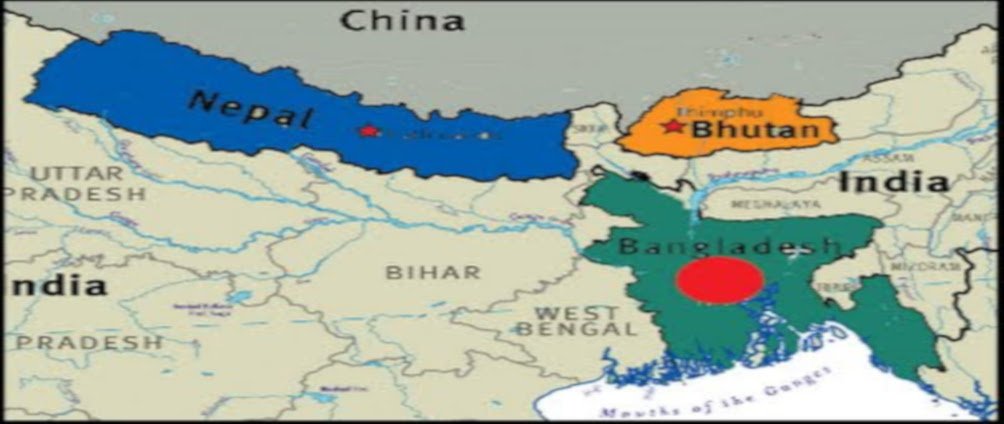Bangladesh and Nepal share a unique relationship that is rooted in historical, cultural, and economic ties. Despite being geographically distant, the two countries have maintained friendly relations since the establishment of diplomatic ties in 1972. This relationship has been characterized by mutual respect, cooperation, and a shared commitment to regional stability and development. In this comprehensive overview, I will delve into the various aspects of the Bangladesh-Nepal relationship, including historical connections, diplomatic interactions, trade and economic cooperation, cultural exchanges, and prospects.
Historical Background: Bangladesh and Nepal have a long history of cultural and trade exchanges dating back centuries. Although separated by India, the two nations have had intermittent contact through the movement of traders, scholars, and religious figures across the Indian subcontinent. The historical ties between Bengal (of which Bangladesh is a part) and the Himalayan regions, including present-day Nepal, can be traced through the exchange of goods, ideas, and cultural practices. Additionally, both countries have shared historical experiences of colonization under British rule, which have influenced their respective struggles for independence and nation-building processes.
Diplomatic Relations: Formal diplomatic relations between Bangladesh and Nepal were established on April 8, 1972, shortly after Bangladesh gained independence from Pakistan. Since then, both countries have maintained resident diplomatic missions in each other’s capitals to facilitate bilateral engagements. High-level visits between leaders of the two countries have been instrumental in strengthening diplomatic ties and enhancing cooperation in various fields. Over the years, Bangladesh and Nepal have signed several bilateral agreements and memoranda of understanding (MoUs) covering areas such as trade, investment, tourism, and cultural exchanges.

Trade and Economic Cooperation: Trade relations between Bangladesh and Nepal have witnessed steady growth, albeit with untapped potential for further expansion. Both countries are members of the South Asian Association for Regional Cooperation (SAARC), which provides a platform for enhancing economic cooperation and regional integration. Bangladesh primarily exports garments, pharmaceuticals, and agricultural products to Nepal, while importing items such as carpets, lentils, and handicrafts. Efforts have been made to address trade barriers and enhance connectivity through initiatives like the Bangladesh-Bhutan-India-Nepal (BBIN) Initiative, which aims to facilitate cross-border trade and transit.
Cultural Exchanges: Cultural exchanges significantly foster people-to-people ties and promote mutual understanding between Bangladesh and Nepal. The shared cultural heritage, including languages, traditions, and religious practices, bridges the two nations. Various cultural events, festivals, and exchange programs are organized to showcase the rich diversity and heritage of both countries. Additionally, educational exchanges and scholarships enable students from Bangladesh and Nepal to study and learn from each other’s academic institutions, further strengthening cultural bonds.
Challenges and Opportunities: Despite the friendly relations between Bangladesh and Nepal, some challenges need to be addressed to harness the potential of bilateral cooperation fully. Geographical barriers, inadequate infrastructure, and bureaucratic hurdles have hampered trade and connectivity between the two countries. Moreover, political instability and regional conflicts in South Asia have occasionally strained diplomatic relations and hindered collaborative efforts. However, there are also significant opportunities for cooperation in areas such as tourism, energy, agriculture, and technology. By leveraging their respective strengths and addressing common challenges, Bangladesh and Nepal can further enhance their partnership for mutual benefit.
Future Prospects: Looking ahead, the future of Bangladesh-Nepal relations appears promising, with both countries expressing a commitment to deepening cooperation and expanding engagement. Initiatives such as the Bangladesh-China-India-Myanmar (BCIM) Economic Corridor and the Belt and Road Initiative (BRI) offer avenues for enhancing connectivity and infrastructure development in the region. Furthermore, participation in multilateral forums like SAARC provides opportunities for collaboration on regional issues and collective action to address common challenges. As Bangladesh and Nepal continue to strengthen their ties across various sectors, they can contribute to peace, stability, and prosperity in South Asia and beyond.
In conclusion, the relationship between Bangladesh and Nepal is characterized by historical bonds, diplomatic goodwill, and shared aspirations for development. Despite facing challenges, both countries have demonstrated a willingness to deepen their cooperation and explore new avenues for partnership. By building on their common interests and leveraging their respective strengths, Bangladesh and Nepal can unlock new opportunities for mutual growth and prosperity in the years to come.
